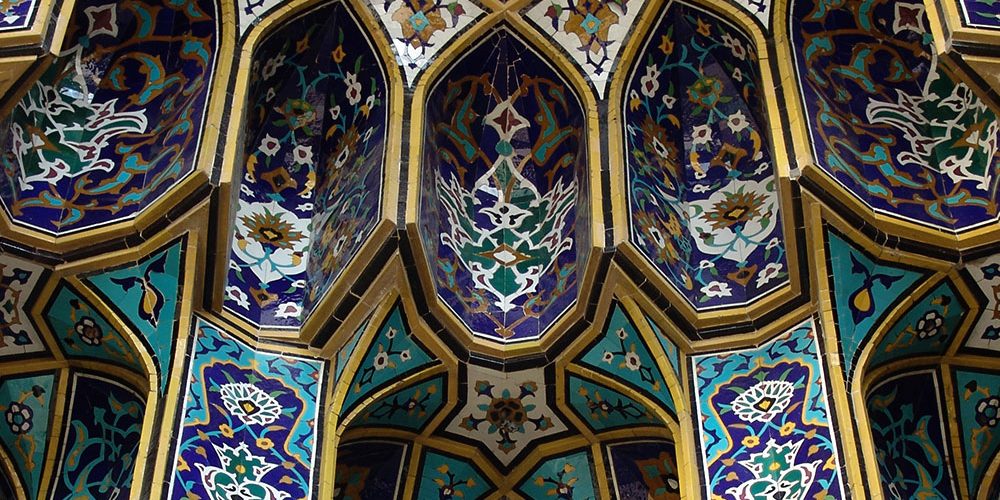Moghrans tile #2
Moqrans has a very important place in Iranian-Islamic architecture.
Moqrans tiling is formed in the form of a ladder and steps.
You can see this model of tiling in most of the entrances of mosques and historical markets.
Moqrans is one of the types of decorations that depends on various materials such as tiles and plaster.
There are four types of moqrans tiling: front moqrans, superimposed moqrans, suspended moqrans and honeycomb moqrans. In each type, first, using plaster, brick, and lime, the design is made, and the cuts and lamps are made according to the desired shape, and then the tiles made according to the building are attached to it.
These tiles can be seven-color tiles, mosaic tiles, etc.
Moqrans have been called one of the most important pillars of Islamic architecture.
One of the most beautiful tiling works in Moqrans can be mentioned the Safavid architecture tiling art in Naqsh Jahan Square and Jame Abbasi Mosque.
The following can be mentioned among the types of Moqrans Kash-kari:
Honeycomb Moqrans
In this tiling model, the structure of the tiles is pentagonal and resembles a beehive.
Suspended Moqrans
In this type of Moghrans tile work, lime lanterns hang from the ceiling.
Muqrans are placed on top of each other
Brick, mud, plaster and lime are used to make this type of moqrans.
Between 2 and 5 rows of moqrans are placed on top of each other.
Moqrans has come forward
Only bricks and mud are used in this type of moqrans work.
It can almost be said that other materials are useless.









